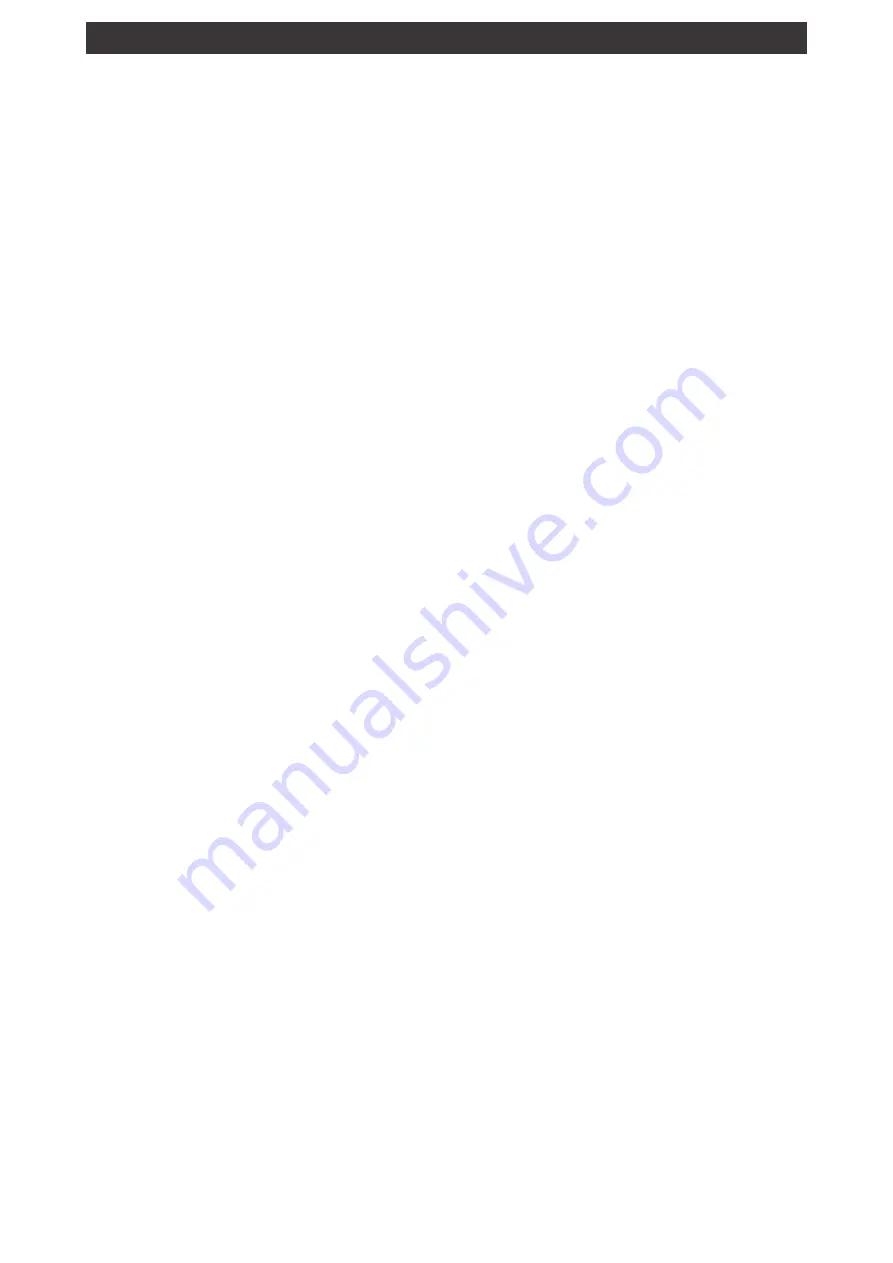
Section B
Compressed air supply system
B.1 Foreword
Peak performance of the staplers and the length of their useful life depend chiefly on the compressed air supply system: a
properly sized system built of quality components and subjected to regular maintenance assures the best performance of
the connceted pneumatic staplers.
B.2 - Design of the compressed air system
The system must take into account the following factors:
?
The power of the air compressor must meet requirements both with regard to pressure and to the air flow supplied. It
should be remembered that a pressure drop takes place along the line due to load losses through chokes, outlets, etc.;
?
the main service line must be of adequate size to cope with the type and number of users connected. Whenever possible,
avoid using chokes, elbows or any other means to break the flow which might contribute to pressure drops along the line.
The latter must be slightly inclined to drain off any condensation which unavoidably forms;
?
the branch pipe with cock and steam trap must be shaped in such a way as to hinder the passage of condensation from the
service line;
?
the regulator unit with cock consists of a combination of filter-steam trap, a pressure regulator with pressure gauge and a
microspray lubricator;
NOTE: To execute the connection to the compressed air mains, so-called quick-connect couplers are used, in which
the male adapter must be mounted on the stapler in such a way that no compressed air remains in it after it has been
disconnected from the mains.
B.3 - Servicing
Check regularly the pressure regulator unit and the oil pressure level in the lubricator for proper operation; if necessary, top
up with oil for pneumatic tools. Proper tacker operation largely depends on moving parts being constantly lubricated, which
only the microspray lubricator can assure. Drain off the condensation regularly (daily) from the lines and the filter-trap, since
it damages the tacker. Clean the regulator unit filter weekly.
Section C
Information on the use of the stapler
C.1 - Tacker performance
It is important that the machine be used only for the purpose for which it was designed and that it not be tampered with in any
way. Before starting to use it, always make sure there is no air leakage, that all parts work properly and especially that the
safety system is perfectly efficient. Also make sure that the machine is clean and lubricated.
C.2 - Working pressure
The tacker must always be supplied at a pressure within the range indicated on the Data Sheet table. A higher pressure than
the one suggested by the manufacturer increases the stress to which it is subjected and therefore the wear of some of the
components. If on the other hand the pressure used is lower than shown on the table, proper performance cannot be
assured. For proper performance and long life, the working pressure of the gun must always be the lowest possible required
to assure full penetration of the staple or of the nail; therefore, if after shooting the fastener has not penetrated completely,
increase the pressure by 0.5 bar at a time, checking the effect. If the penetration is excessive, reduce the pressure by 0.5 bar
at a time until the required degree of penetration is achieved. It is strictly forbidden to supply the gun with high-pressure gas
such as oxygen, carbon anhydride or other bottled gases: the gun might explode and cause serious damage and injury.
C.3 - Trigger and safety catch
These are highly important parts from a safety point of view and must therefore always be perfectly efficient. The safety catch
must never be tampered with, removed or blocked in such a way as to void the purpose for which it was designed.
C.4 - Loading the tool
It is a safe practice to disconnect the gun from the compressed air line before loading it to rule out any cause for accidents. If
the gun is not disconnected from the mains, take the utmost care in handling it since this may cause highly dangerous
accidental shooting.
C.5 - Jam-clearing
If the gun jams,Disconnect the gun from the compressed air line and unload the magazine, clean the head, the magazine
and any other parts connected with it. If jamming occurs too often, consult a specialized service centre.
NOTE: In order to avoid jamming, breakage or early wear, only use staples or nails of the type indicated for each
model.OMER staples and nails are of a size and quality that make them ideal for staplers and therefore assure top
performance at all times and long life. OMER spa does not answer for damage to the gun due to the use of staples or
nails of types not suitable for the model.
- 6 -
Summary of Contents for 1146050ROP
Page 15: ...Spare parts 16...
Page 20: ...Notes 22...






































